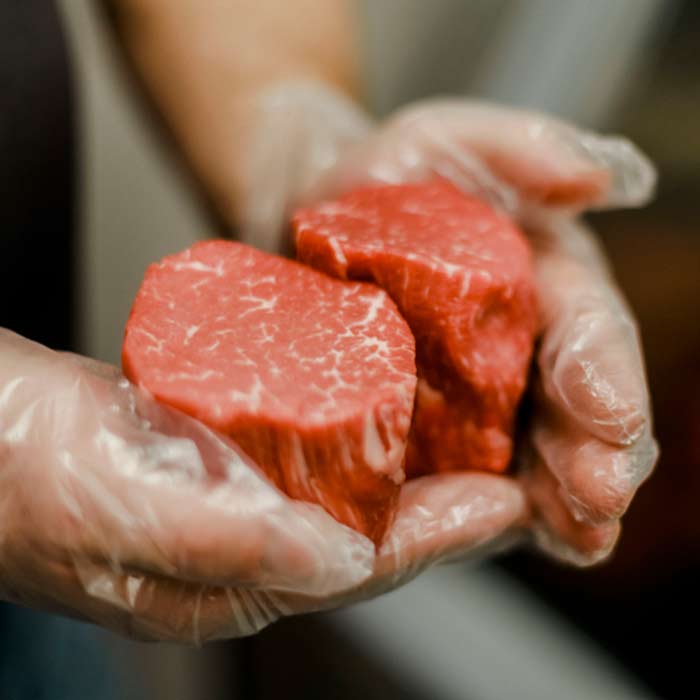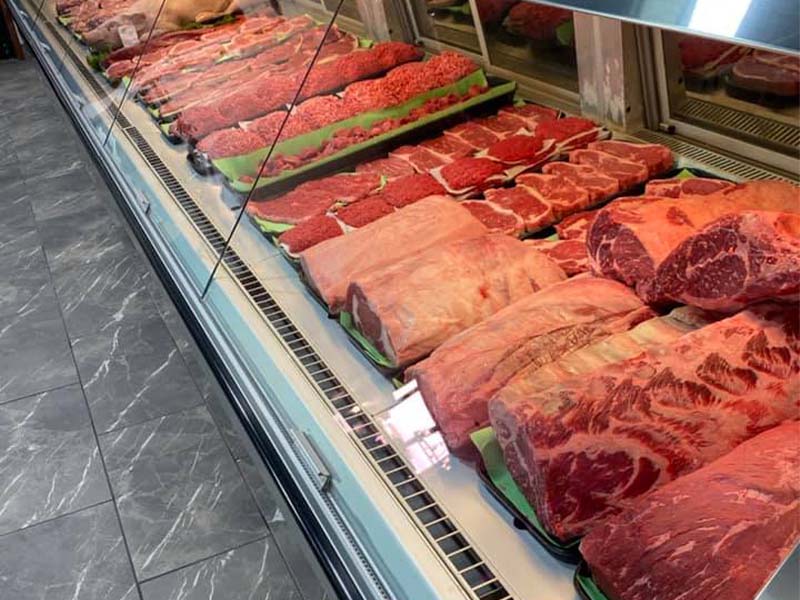What Makes Bagley Farms Meat Market Edwardsville IL Stand Apart for Meat Lovers
What Makes Bagley Farms Meat Market Edwardsville IL Stand Apart for Meat Lovers
Blog Article
Discover the Art of the Butcher's Cut in a Modern Meat Market
In the ever-evolving landscape of modern-day meat markets, the butcher's cut has transcended its conventional roots, combining olden workmanship with contemporary practices. Today's butchers are not merely processors of meat; they are experienced artisans who highlight sustainability and honest sourcing. Their expertise in selecting and preparing cuts tailored to certain cooking needs provides an unequaled dining experience. Yet, what really sets the modern butcher apart is their ability to create a much deeper connection between consumers and the origins of their meat. How do these masters balance tradition with innovation, and what effects does this have for the future of meat consumption?
Evolution of Butchery Techniques
The development of butchery methods mirrors a rich tapestry of advancement and adaptation driven by innovations in innovation, modifications in consumer demand, and a much deeper understanding of meat science. Historically, butchery was a craft gave with generations, with approaches honed over centuries to take full advantage of return and taste. Nevertheless, the commercial change introduced mechanization, transforming typical practices and enabling large-scale handling.
The mid-20th century saw butchery strategies even more refined by scientific insights right into muscle mass biology and meat aging, improving both inflammation and taste. Innovations like vacuum cleaner product packaging and refrigeration expanded item shelf-life, enabling butchers to diversify offerings and improve quality assurance. This duration also noted the rise of customized tools, such as band saws and meat slicers, which boosted precision and effectiveness in meat handling.

The 21st century has actually introduced electronic technology into the butchery world. Computerized systems currently aid in tracking pet provenance and optimizing cuts to fulfill particular customer choices. In addition, a revival in artisanal butchery has emerged, mixing conventional skills with contemporary understanding to provide to customers seeking ethical and sustainable meat choices. This advancement underscores a dynamic interplay between practice and innovation, conference contemporary demands while protecting the craft's heritage.
Recognizing Meat Cuts
Comprehending the complexities of meat cuts is essential for both butchers and consumers seeking high quality and value. For butchers, accurate cuts show skill and regard for the craft, ensuring marginal waste and optimum return.

Recognizing muscle mass composition is essential; muscles utilized much more frequently by the pet tend to be harder and are best fit for slow food preparation methods, while less-used helpful resources muscular tissues, like those discovered in the loin, are more tender and perfect for grilling or roasting. Knowledge with these distinctions encourages consumers to make informed options, enhancing their cooking endeavors.
Choosing Quality Meat
Choosing the best meat entails even more than just picking a visually attractive piece from the screen. The art of picking quality meat requires a critical eye and understanding of details features that signify freshness and quality.
Second of all, take into consideration the marbling, which describes the white flecks of fat within the muscle. Proper marbling is an essential sign of inflammation and taste, as it thaws throughout food preparation, boosting the meat's juiciness. Bear in mind, greater marbling often correlates with premium quality cuts, such as USDA Prime.
Texture is another vital aspect; meat must really feel solid to the touch, not slimy or excessively soft. Furthermore, bear in mind the scent. Fresh meat ought to have a clean, neutral smell, without any sour or off-putting odors.
Combining Cuts With Food Preparation Techniques

Alternatively, tougher cuts like brisket and chuck roast are rich in collagen, which breaks down into jelly when prepared gradually. These cuts are ideal for braising or slow roasting, find out here enabling the meat to soften with time and create deep, complex flavors. Similarly, cuts such as find out short ribs and pork shoulder get on well with slow-cooking techniques, where prolonged cooking times change their durable appearances right into delicious recipes.
Lamb shanks and oxtail, which call for long term food preparation to soften, are best prospects for cooking or sluggish simmering. These techniques coax out rich, hearty flavors while maintaining dampness. By recognizing the one-of-a-kind qualities of each cut, chefs and home cooks alike can boost their cooking productions, making certain each recipe is both pleasing and unforgettable.
The Butcher's Duty Today
Navigating the evolving landscape of the modern-day meat market, the butcher's role today extends past mere preparation of cuts. Contemporary butchers are cooking artisans, instructors, and advocates for lasting methods. They link the space in between the farm and the fork by ensuring moral sourcing, understanding pet husbandry, and prioritizing openness in the supply chain. This shift shows the growing consumer need for high quality over amount, where provenance and pet welfare are vital.
In enhancement to crafting precise cuts, butchers now involve straight with customers, supplying cooking advice and customizing options to suit private demands and preferences. Their experience in meat aging, marbling, and flavor profiles equips customers to make informed decisions, improving their cooking experiences. This personalized service exemplifies the butcher's progressing duty as a trusted consultant in the cooking area.
Moreover, butchers are critical in lessening waste, making use of entire pets to create diverse products such as sausages and stocks. This detailed strategy not just respects the animal but also lines up with contemporary sustainability goals. This way, the contemporary butcher personifies both practice and technology, adjusting to an ever-changing market while preserving the artistry and integrity of their craft.
Conclusion
Proficiency in comprehending diverse meat cuts and top quality signs empowers butchers to give educated suggestions, aligning details cuts with ideal cooking techniques. By honoring historical techniques while accepting modern demands, the butcher's role continues to be important in today's sophisticated meat market.
Report this page